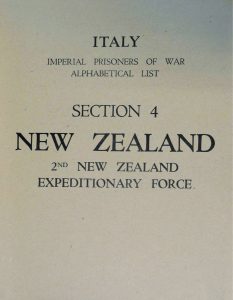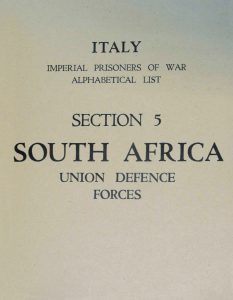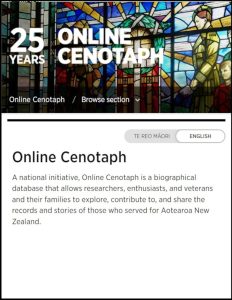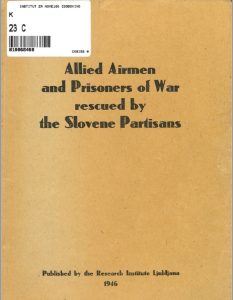The prisoner of war camp No. 107
The prisoners
On 30 September 1942 there were 500 prisoners of war in the camp: 250 South Africans and 250 New Zealanders. For the most part, they were captured between 28 November and 1 December 1941 in Libya, during battles near Tobruk. They were first interned in the Benghazi camp, then transferred to Italy to camp 66 in Capua and then to 52 in Pian di Coreglia (Coreglia Ligure) or 57 in Grupignano (Cividale del Friuli, about 45 km from 107). They arrived by train and disembarked at Torviscosa station; from here they continued on foot for another 3 km to the work camp.
On 14 October 1942, the transfer of a further 200 prisoners from camp PG 52 in Pian di Coreglia was arranged, and the following day another 300 New Zealanders from camp PG 57 in Grupignano. Of this second group, were those we knew to have been captured in Egypt during the first battle of El Alamein.
With these transfers, the places that were still available were completely filled and by the second half of October the work camp was fully operational. On 30 November 1942, there were 1,000 prisoners in camp PG 107: 616 New Zealanders and 384 South Africans.
The prisoners were initially employed in the construction of roads and ditches and in the completion of the camp’s housing and facilities; in the following months, in addition to the reclamation work, the prisoners were also used in cultivation and cane cutting. The prisoners’ working day was identical to that of civilian workers: in the winter it could last 7 or 8 hours, while in the summer it would go up to 9 and even 10 hours.
Below are some alphabetical lists of prisoners of war who were conscripted into the British Army during the Second World War. The first two lists come from the National Archives of the UK (reference: WO 392/21) and contain the names of New Zealand and South African prisoners in Italy, with the relative internment camp. The list was probably drawn up between September and October 1942. Consequently, some prisoners, who we know to have been in 107, in these lists are still assigned to the previous transit camp (for example, 57 Grupignano).
The third list was taken from the Auckland Museum War Memorial database and contains the list of New Zealand prisoners in Italy with the link to the relevant Cenotaph record.
Finally, the fourth list contains the names of the soldiers of the Allied armies who were helped by the Slovenian partisans. It comes from the History of Slovenia – SIstory portal. It is not in alphabetical order, but you can easily search by word.
Click on the images to download.






 The camp
The camp